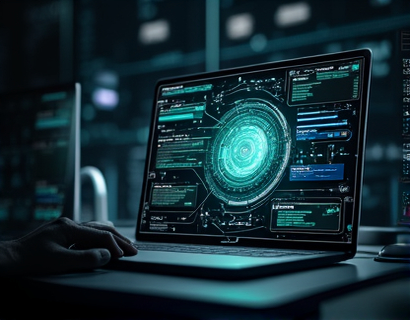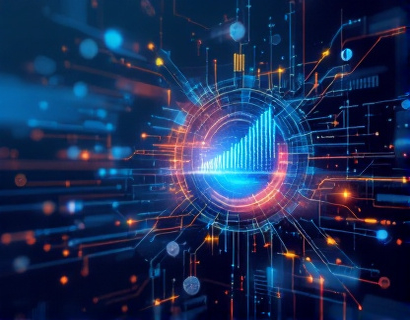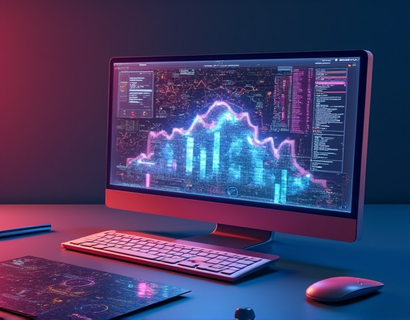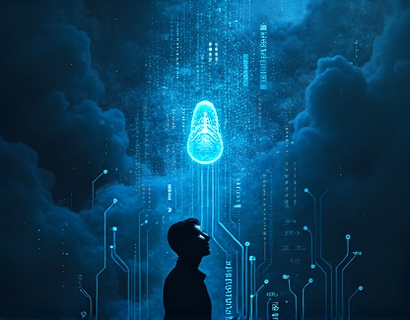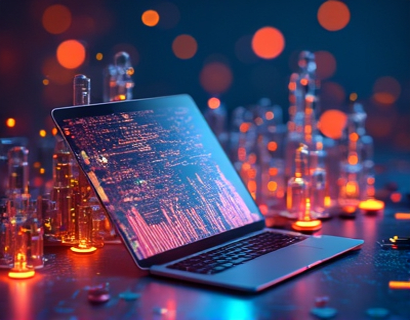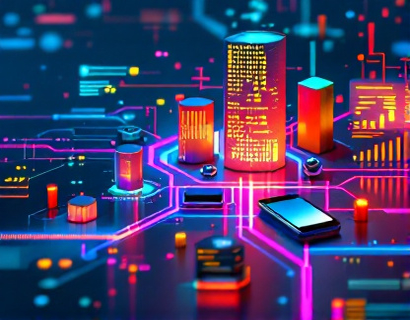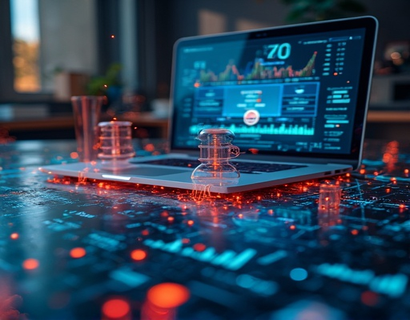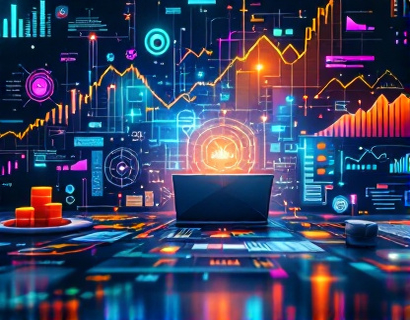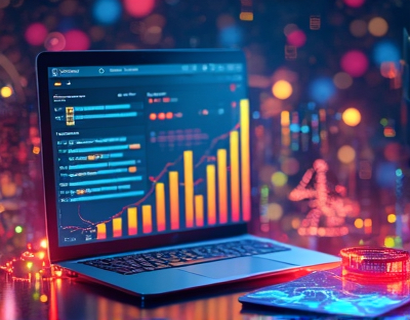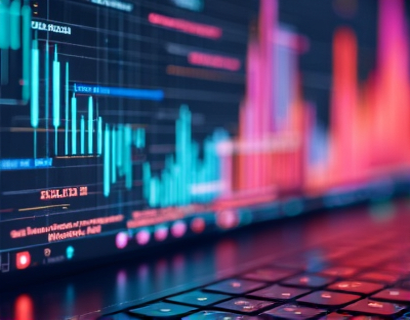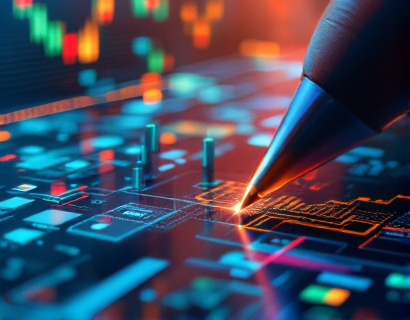Harnessing the Synergy of AI and Crypto: A New Era of Digital Productivity and Accessibility
The intersection of artificial intelligence and cryptocurrency is giving birth to a new paradigm in digital innovation, one that promises to redefine productivity and app accessibility. This transformative convergence is not just a technological curiosity but a practical solution for tech-savvy professionals and early adopters seeking to maximize their digital potential. As we delve into this exciting frontier, it's essential to understand how these two cutting-edge technologies complement each other and what this means for the future of digital solutions.
Understanding AI and Crypto: The Building Blocks of Next-Gen Innovations
Artificial intelligence, with its ability to process vast amounts of data, learn from patterns, and make decisions with minimal human intervention, has become an indispensable tool in various industries. From healthcare to finance, AI is driving efficiency and innovation. On the other hand, cryptocurrency, particularly blockchain technology, offers a decentralized, secure, and transparent way to conduct transactions and store value. When combined, AI and crypto create a powerful synergy that can unlock new possibilities in digital productivity and accessibility.
Enhancing Productivity with AI-Driven Crypto Solutions
One of the most significant impacts of this fusion is in the realm of productivity tools. Imagine an app that uses AI to analyze your work patterns and suggests optimal times for tasks based on your productivity peaks. This app could also integrate with cryptocurrency-based reward systems, incentivizing users to maintain high productivity levels. Such a tool would not only streamline workflows but also provide a unique motivational framework powered by blockchain's immutable record-keeping.
Another example is AI-powered virtual assistants that can manage crypto portfolios. These assistants can monitor market trends, predict price movements, and execute trades with minimal human input. By leveraging machine learning algorithms, these assistants can adapt to changing market conditions, ensuring that users' crypto investments are optimized for maximum returns. This level of automation and intelligence significantly reduces the time and effort required to manage complex crypto portfolios.
Improving App Accessibility Through Blockchain and AI
Accessibility is a critical aspect of digital innovation, ensuring that technology benefits everyone, regardless of their abilities or location. The combination of AI and crypto can greatly enhance app accessibility. For instance, AI-driven interfaces can adapt to individual user needs, providing personalized experiences. For users with visual impairments, AI can generate descriptive audio feedback, while for those with motor disabilities, voice-activated commands powered by AI can make apps more usable.
Blockchain technology adds another layer of accessibility by ensuring that user data and preferences are securely and privately managed. Decentralized storage solutions can store user profiles and settings, allowing seamless access across different devices and platforms. This not only enhances the user experience but also empowers users by giving them control over their data.
Decentralized Applications: The Future of Productivity and Accessibility
Decentralized applications (dApps) are at the forefront of this revolution, leveraging both AI and blockchain to create robust, secure, and user-friendly digital services. dApps can operate without a central authority, reducing the risk of data breaches and ensuring transparency. AI can enhance dApps by providing intelligent features such as predictive analytics, natural language processing, and automated workflows.
For productivity, dApps can offer collaborative tools that are immune to censorship and downtime. Imagine a cloud-based word processor that uses AI to suggest edits and improvements, all while ensuring that your document is stored securely on a decentralized network. This combination not only boosts productivity but also ensures that your work is safe and accessible to authorized users anywhere in the world.
In terms of accessibility, dApps can provide equal opportunities to users in regions with limited internet access or those who are underserved by traditional tech giants. By reducing reliance on centralized servers, dApps can function with minimal bandwidth, making advanced digital tools available to a broader audience.
Security and Trust in AI-Crypto Ecosystems
Security is a paramount concern in both AI and crypto domains. The integration of these technologies can lead to more secure and trustworthy digital solutions. Blockchain's inherent security features, such as cryptographic hashing and consensus mechanisms, provide a robust foundation for protecting sensitive data and transactions. AI can further enhance security by detecting and mitigating threats in real-time, identifying anomalies and potential vulnerabilities in the system.
Smart contracts, self-executing contracts with the terms directly written into code, can automate and enforce agreements with high precision. When combined with AI, smart contracts can adapt to changing conditions and execute complex logic, ensuring that transactions are not only secure but also efficient and reliable. This level of security and trust is crucial for widespread adoption and can significantly boost user confidence in AI and crypto-based solutions.
Case Studies: Real-World Applications of AI and Crypto
Several projects are already demonstrating the potential of AI and crypto in enhancing productivity and accessibility. One notable example is a decentralized AI marketplace where developers can upload and monetize their AI models. This platform uses blockchain to ensure fair compensation and transparent transactions, while AI algorithms help match developers with the most suitable projects based on their expertise and the project requirements.
Another case is a crypto-backed health app that uses AI to provide personalized health recommendations. The app stores user data on a decentralized network, ensuring privacy and control. AI algorithms analyze health data to suggest diet, exercise, and lifestyle changes, with rewards in cryptocurrency for achieving health milestones. This not only motivates users but also creates a community-driven approach to health and wellness.
Challenges and Future Prospects
Despite the immense potential, the integration of AI and crypto is not without challenges. Regulatory uncertainties, technical complexities, and the need for user education are significant hurdles that need to be addressed. However, as the technology matures and more successful use cases emerge, these challenges are likely to diminish.
Looking ahead, the future of AI and crypto is bright. We can expect to see more sophisticated AI-driven tools that seamlessly integrate with blockchain ecosystems, creating a new generation of digital solutions. The convergence of these technologies will continue to drive innovation, making digital productivity and accessibility more powerful and inclusive than ever before.
In conclusion, the synergy between AI and crypto is paving the way for a new era of digital excellence. By leveraging the strengths of both technologies, we can create tools and platforms that not only enhance productivity but also ensure that digital solutions are accessible to all. As we continue to explore this exciting frontier, the possibilities are endless, and the future is undoubtedly transformative.






